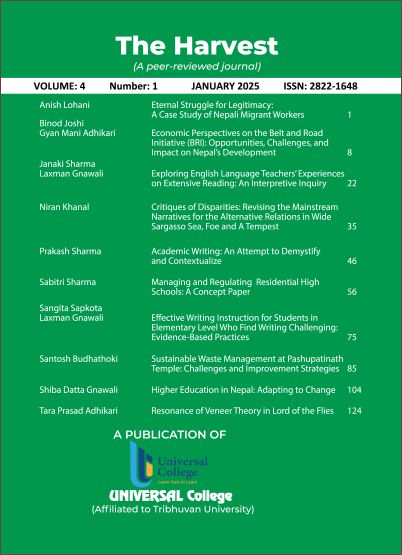Economic Perspectives on the Belt and Road Initiative (BRI): Opportunities, Challenges, and Impact on Nepal’s Development
DOI:
https://doi.org/10.3126/harvest.v4i1.75347Keywords:
belt and road initiative, economic perspectives, nepal, infrastructureAbstract
The Belt and Road Initiative (BRI), a global infrastructure development and economic cooperation project spearheaded by China, has evolved into one of the most influential economic frameworks of the 21st century. Launched in 2013, the BRI aims to enhance global trade connectivity, promote infrastructure development, and foster economic integration across Asia, Europe, Africa, and beyond. With an estimated budget exceeding $8 trillion, the BRI is poised to shape the economic trajectory of many developing nations, particularly in terms of trade, investment, and regional development. However, alongside the economic opportunities it presents, the BRI also generates significant challenges, including concerns about debt sustainability, geopolitical tensions, and environmental impacts. This paper delves into the economic perspectives of the BRI, examining its theoretical foundations, opportunities, challenges, and its broader economic implications, especially for smaller economies like Nepal. By analyzing recent data, research findings, and case studies from 2020 to 2024, the study offers a comprehensive understanding of how the BRI influences global and regional economies, particularly in the context of Nepal's strategic engagement with China. The paper also draws on contemporary economic theories, providing insights into how infrastructure development and international trade dynamics intersect within the BRI framework. The analysis concludes with policy recommendations aimed at maximizing the economic benefits of the BRI while mitigating associated risks.




